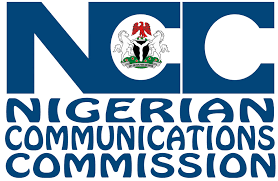
Nkasiobi Oluikpe
For every meaningful and impactful initiative, a goal, which serves as a roadmap, is set. Undertaking a course of action without a well-laid out plan or goal, will definitely lead to failure of such project.
Setting goals for CSR projects, will help the project managers take active and decisive steps in achieving the desired outcome. Setting CSR goals involve identifying a project’s beneficiaries and determining the desired outcomes.
Because it is one thing to set a goal, and another to achieve the goal, there is need for not just a monitoring and evaluation team, but a very independent one, who will devise a framework to implement the monitoring and evaluation strategy. Part of their assignment will include identifying the project’s beneficiaries; whether the project is meeting the required timeline; thoroughly and meticulously scrutinizing how every dime is spent and whether such spending meets the expectations and interests of the stakeholders, as well as if the project is performing in accordance to regulatory rules guiding the community/region.
This process can occur at different stages of a project. You don’t start and go to bed. Monitoring and evaluation is a consistent activity all through the lifecycle of a project. At the start of a project, the monitoring and evaluation team creates a suitable plan and establishes the yardstick for measuring the project’s progress.
Representing the eye of the stakeholders on the project, the team would have to be selected from both within and outside of the organization but will be answerable only to the stakeholders. In order not to lose the trust of the stakeholders, they must do everything within their disposal not fall into pitfalls that might be set before. Chances of mischievous organisations setting banana peels before M&E teams are not impossible. It could serve as escape routes for misdeeds. So the M&E team should as much as it is possible be consciously uncompromising.
In a nut shell, monitoring and evaluation is the act of periodically checking and observing the progress of a project and assessing its overall performance. This enables project managers to make the necessary changes to keep the project on track and guard them on how to proceed and not repeat a previously detected error.
Members of an M&E team could involve professionals in various fields of endeavor. Finance experts, communication experts, technical experts, data analysts, coordinators and planners, others.
The process will indicate whether the operational approach requires adjustment and provision of information regarding the necessary changes.
Now in carrying out their assignment, the monitoring and evaluation team will have to adopt some salient strategies. One of such is to work out plans and schedules for their activities. They too are given a timeline within which they should wrap up everything that is expected of them. So, if there is anything they should always have at the back of their minds, it has to do with being time conscious.
They would have to work out plan and schedules highlighting critical project milestones that may require special attention during implementation. These plans and schedules are used for planning daily and weekly work activities. The project schedule will indicate the project phases, milestones, task lists, their durations, etc. They are periodically updated and also a good indicator of the health of the project.
There would be a need for the M&E team to pick out people that are directly involved in delivering the project as well as the target beneficiaries of the project, including key members of the organization implementing the project so as to regularly interview them. Not everybody can be interviewed, hence, there is the need to identify the key stakeholders. They need these people’s constant input and feedback. It will form part of their report. Noninvolvement of stakeholders is an important factor implicated in project failures.
Another strategy is for the M&E team to conduct scheduled and unscheduled field visits. Scheduled field visits provide the stakeholders with the opportunity to make firsthand assessment of the project progress. Though field visits and their frequency should be planned to avoid a disruption of project activities.
The unscheduled visits could be replaced with planting a spy among the field or site workers in order to avoid unnecessary disruptions. The spy would be feeding the team with developments on the project. It will also be important to take photographs of the activities that are in progress and observe construction activities including the equipment and personnel.
The team would be expected to share data and other relevant information collected on the fields with key stakeholders. It could be in the form of printed materials or digital materials that is to be sent out at frequent intervals. This will ensure that the data collected and analysed lead to real time change/corrections or leads to better planning and design of future similar projects. Data should always be collected for a particular purpose that will inform the stakeholders about the success and progress of the program. It must also assist the staff to make modifications in real-time.
Dissemination of information and data to relevant stakeholders does not in any way stop them from holding meetings with them. It could be one-on-one or virtual, this could be quarterly, bi-annually or even annually, all depending on the lifecycle of the project. This will help them to review data and programme progress.
The reason why it is absolutely important for stakeholders to inculcate monitoring and evaluation into its CSR projects is because, as it is popularly said, ‘every business is a risk’. Monitoring and evaluation will help to check the risk that might be encountered versus the benefits or rewards.
It is also good at every stage of the project to have a clear and concise information on what is happening, stakeholders will get to know if they are going to benefit from the ongoing project or whether they are just wasting their time. With information at their disposal, they can decide to infuse more resources into a project or to withdraw resources before they are completely wasted.
It can also help in identifying new opportunities that might come by and allow you time to focus on them. Besides, progress report can lead to generating more funds for the expansion of the project. It also encourages a diversity of innovative thoughts and idea
In summary, monitoring and evaluation should form an indispensable part of any CSR project as it ensures that right decisions are taken at the right time and that resources judiciously allocated.








